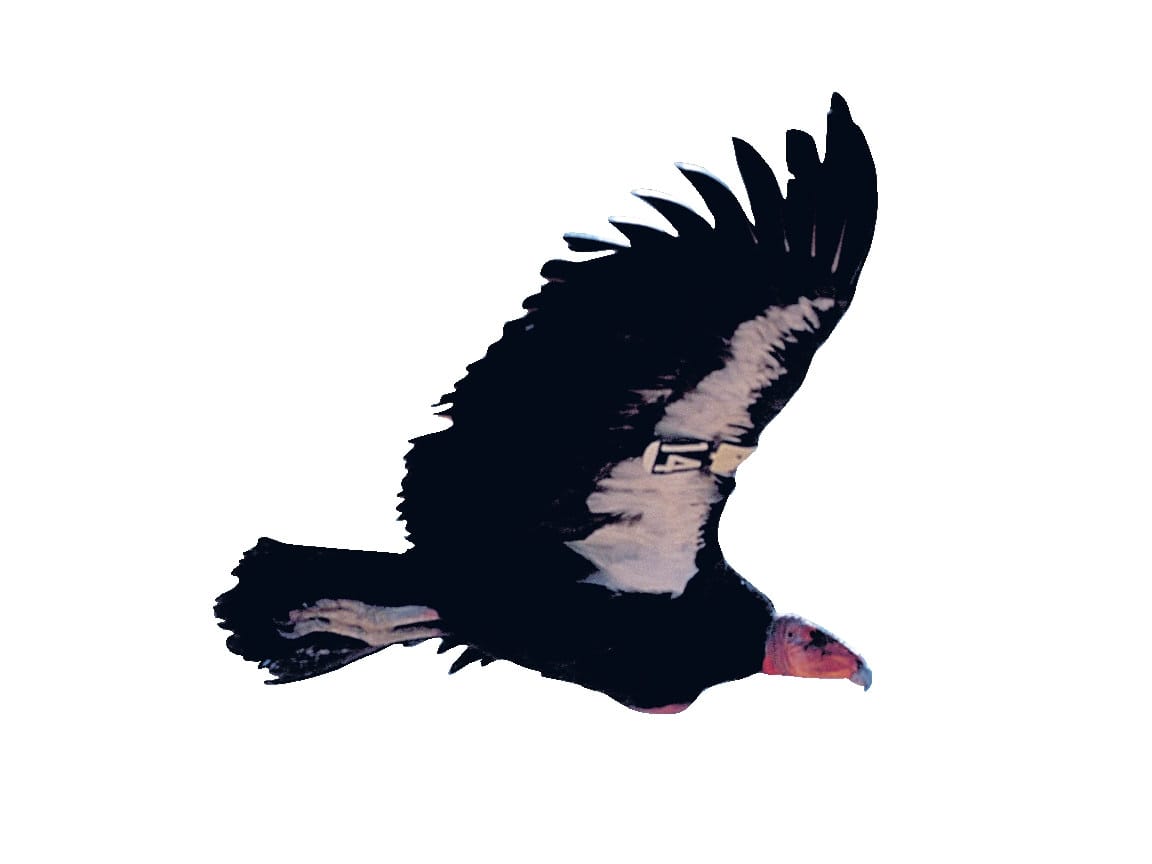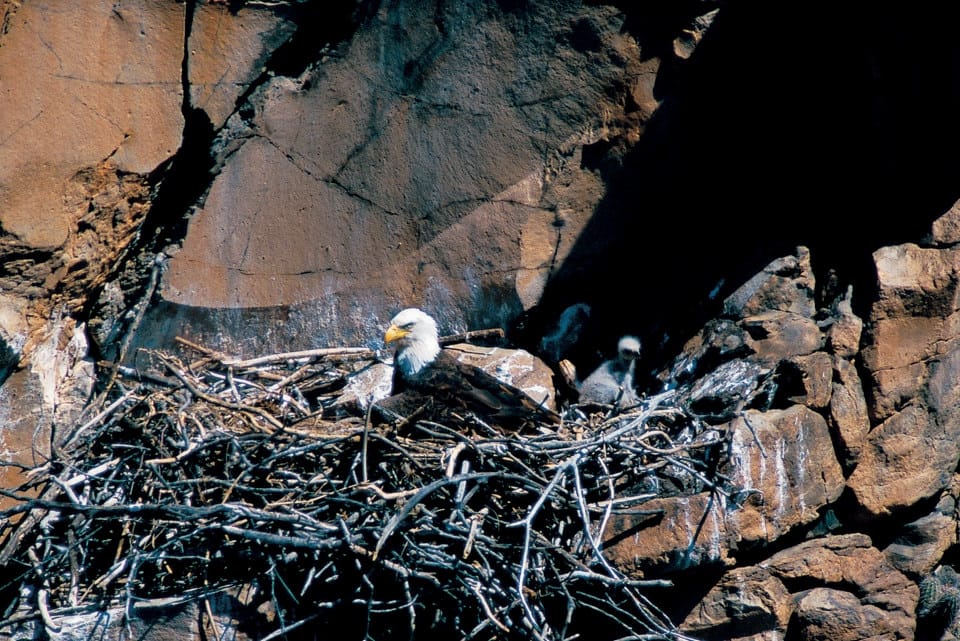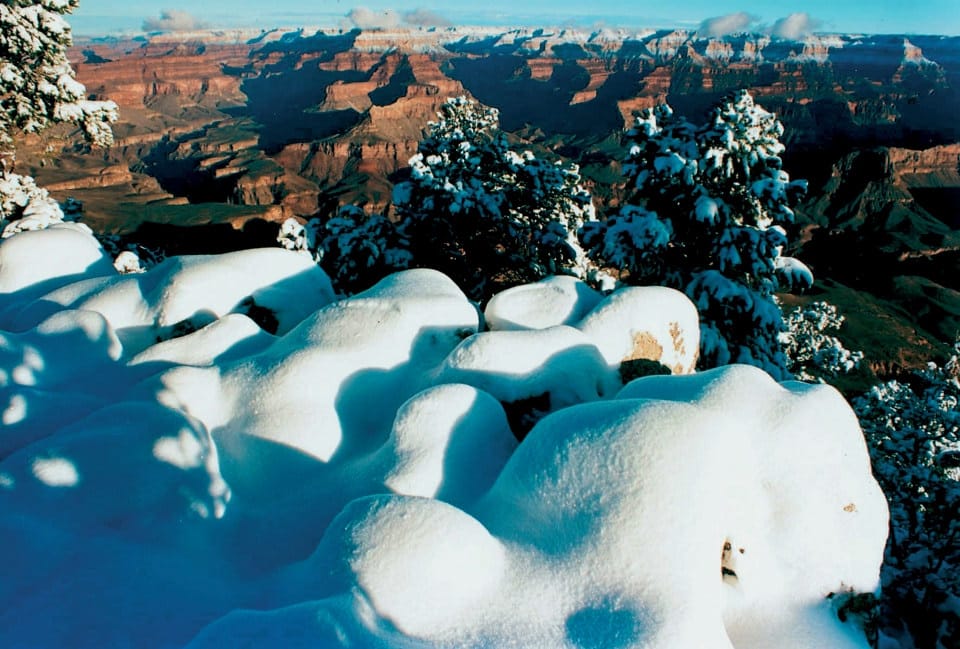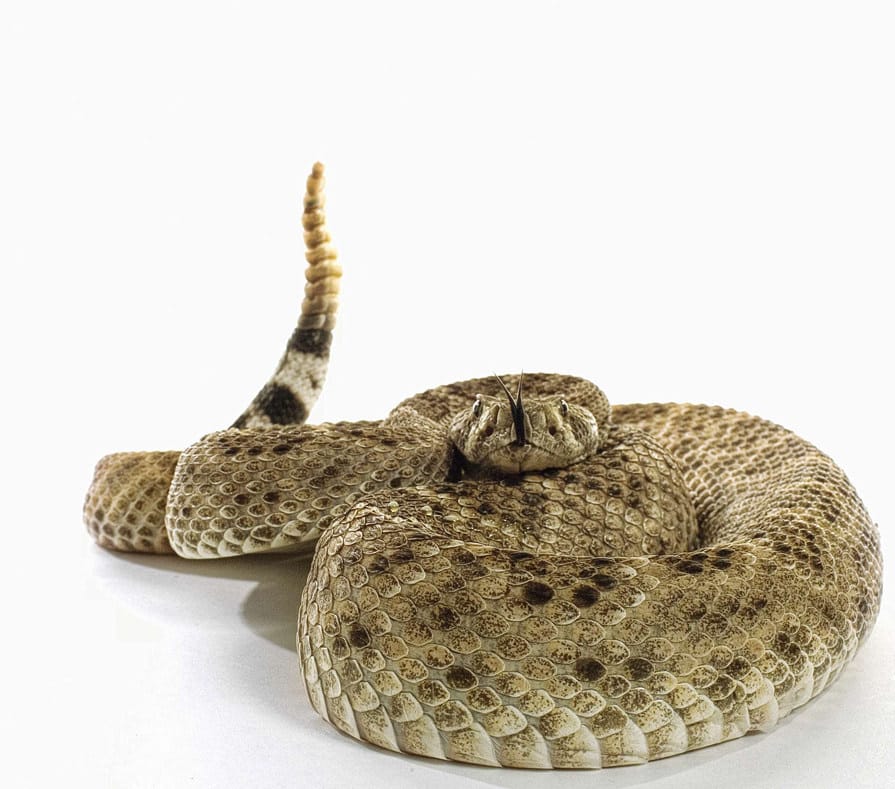Hiking into the Grand Canyon offers intimate views of the plants and animals that live at different elevations. Dwarf piñon-juniper thickets grow below the rim, and airy forests of virgin ponderosa pine and gambel oak dotted with natural clearings called “parks” dominate the 7,000ft (2,000-meter) South Rim, alongside native grasses, cliffrose, sagebrush, prickly pear cactus, scarlet Indian paintbrush, and purple lupine. The higher, moister 8,200ft (2,500-meter) North Rim supports fir and aspen, biological pioneers that grow up in the sunlight at the margins of meadows. Alpine fir-spruce forests are found at the North Rim’s highest elevations.
Rim residents include Steller’s jays, woodpeckers, great horned owls, huge desert ravens, and restored populations of California condors. Cottontails, gophers, and other rodents form the diet of nocturnal coyotes and bobcats. Long-eared mule deer emerge at dusk to feed. They are the principal prey of cougars, one of the West’s most timid creatures. Look for two distinct species of squirrel, which evolved as the canyon widened: the Abert’s on the South Rim and the Kaibab on the North Rim.
In the canyon bottom, adjoining desert and riparian habitats create a striking contrast. Shy bighorn sheep are sometimes seen among rocks, picking among cacti and yucca, startling chuckwallas, collared lizards, and the occasional rattlesnake. Mingling with the sound of trickling water is the sweet, descant song of the canyon wren, which hops among rocks, native willows, and exotic tamarisk. Birds rely on the Colorado River for survival and include ducks, sandpipers, endangered Southwest willow flycatchers, great blue herons, and bald eagles attracted by coldwater fish like rainbow trout and carp. Where water seeps through sandstone, look for lovely “hanging gardens” of maidenhair fern, monkeyflower, and columbine.

Bighorn sheep thrive in the vertical terrain of the canyon. Sharp, cloven hooves allow them to stand on ledges only inches wide, and powerful legs propel them away from predators at speeds up to 30mph (48kmh).
Arizona Office of Tourism

Hikers pass through a ponderosa pine forest on Widforss Trail on the North Rim of the Grand Canyon; ponderosa pines grow at elevations between 6,500ft and 8,200ft (2,000–2,500 meters).
Istockphoto

The endangered California condor is the largest flying bird in North America. The Arizona population numbered 74 birds in 2011. A second population has been established on the California coast.
Arizona Office of Tourism

Bald eagles returned to the Grand Canyon in the mid-1980s, possibly attracted to the presence of trout in the Colorado River and an increase of migratory waterfowl. The Fish and Wildlife Service removed the bald eagle from Endangered Species in 2010, even though only 50 breeding pairs survive in Arizona.
Arizona Office of Tourism

Snow blankets the South Rim.
Arizona Office of Tourism
Merriam’s Life Zones

Rattlesnakes use their fangs for both hunting and defense. Their venom prevents blood from clotting; a bite should be treated immediately.
Arizona Office of Tourism